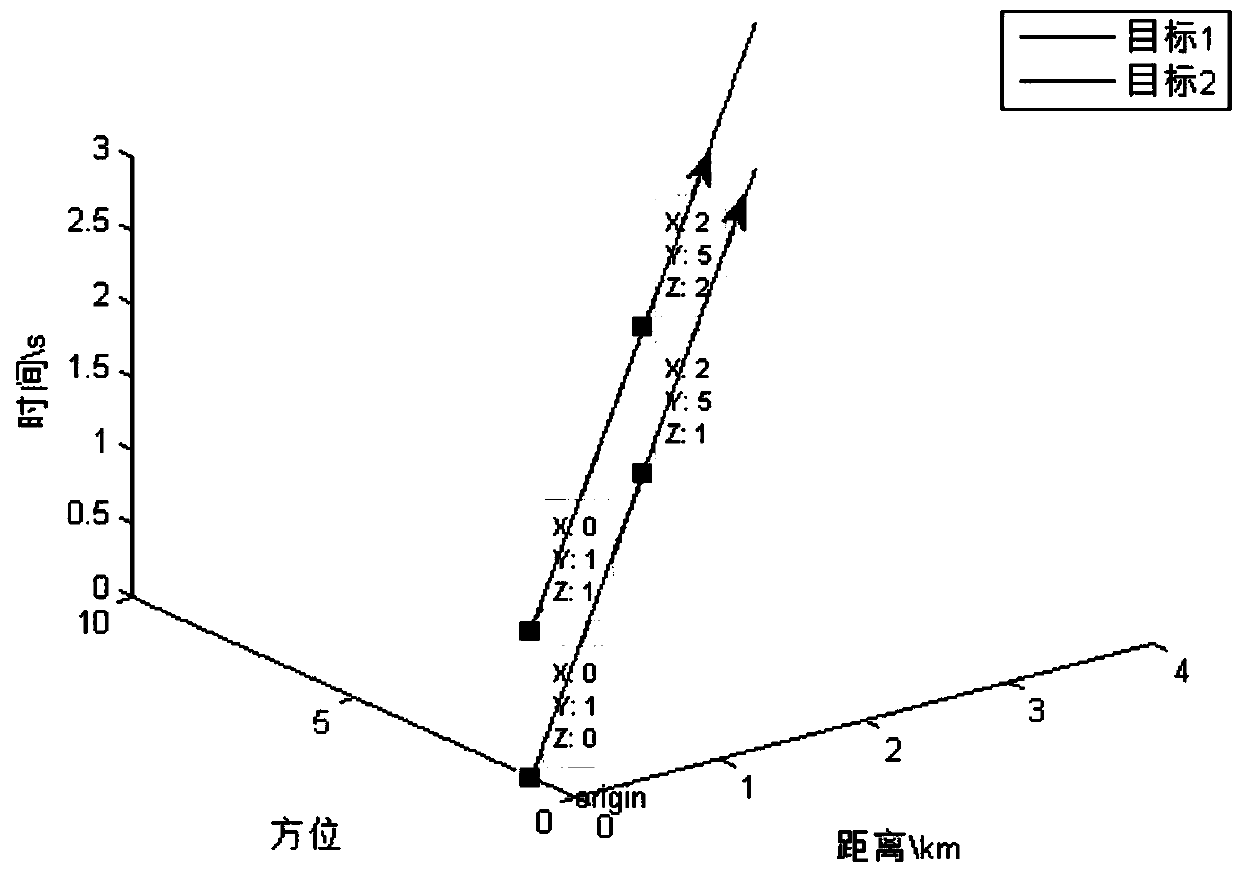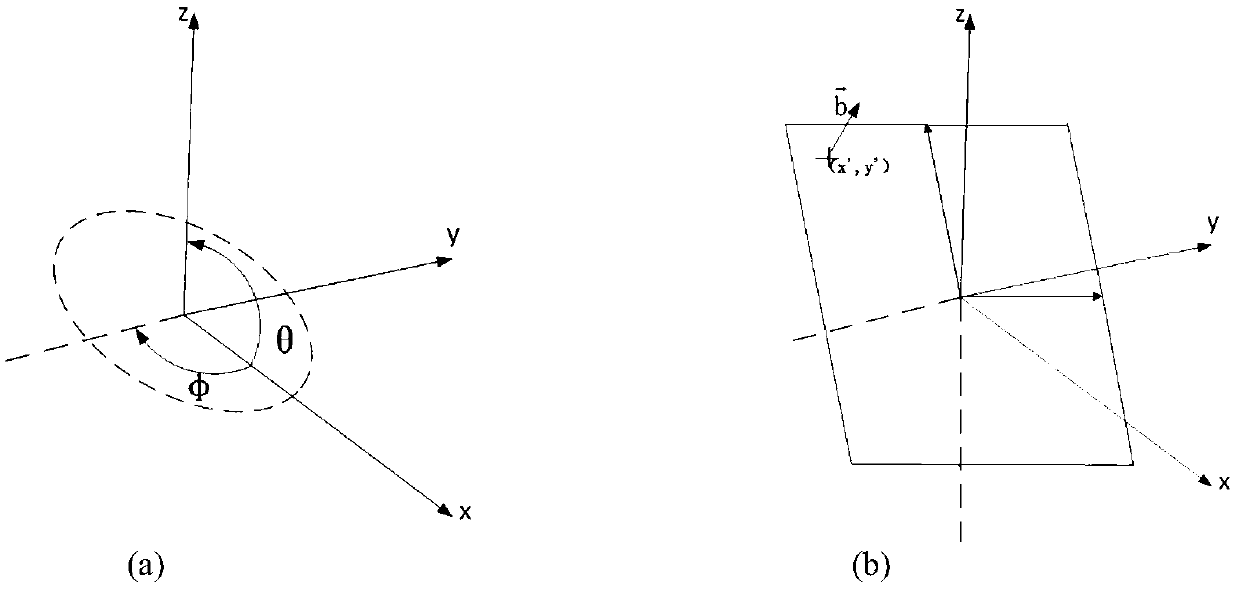Three-dimensional Hough transform-based track-before-detect method and radar target detection system
A forward tracking, three-dimensional technology, applied in the field of radar target detection system, can solve the problems of tracking divergence, high calculation amount, false track, etc., to achieve the effect of improved detection effect, low computational complexity, and strong false alarm suppression ability
- Summary
- Abstract
- Description
- Claims
- Application Information
AI Technical Summary
Problems solved by technology
Method used
Image
Examples
Embodiment 1
[0196] Embodiment 1: When the radar starts the target through the point track data, the remaining point track set that is not associated with the reliable track within a period of time is input, and there may be undetected target track in this set. Point trace information includes two-dimensional position information and one-dimensional time information. It is expected to obtain undetected target tracks, each target track includes several points, and the points of the same track are generated by the same target. The target starting work can be accomplished through the following three iterations respectively.
[0197] In the first step, use formula (5) and image 3 The set of discrete directions in b votes on the parameter domain.
[0198] The second step is to find the cell with the highest number of votes detected, take out the dot traces that voted for this cell, and use formula (31) to estimate the parameters of the three-dimensional straight lines where these dot traces ...
Embodiment 2
[0201] Embodiment 2: When video multi-target tracking, the 3D-HT-TBD algorithm can be utilized when pedestrians and vehicles in common videos are tracked. The input is a video sequence, and the output is the trajectory of pedestrians in the video. The pedestrian trajectory can be obtained iteratively through the following steps.
[0202] The first step is to use the template to detect pedestrians in each frame of the video, extract each image block of suspected pedestrians in the video frame, and take the center of the image block as the dot trace. At this time, a dot trace information has three-dimensional, two-dimensional spatial information and one-dimensional time information. The two-dimensional spatial information is the row number and column number of the pixel point in the center of the pedestrian, and the one-dimensional time information refers to the serial number of the frame in the video. Send the 3D points extracted from the video to 3D-HT-TBD for detection.
...
PUM
 Login to View More
Login to View More Abstract
Description
Claims
Application Information
 Login to View More
Login to View More - R&D
- Intellectual Property
- Life Sciences
- Materials
- Tech Scout
- Unparalleled Data Quality
- Higher Quality Content
- 60% Fewer Hallucinations
Browse by: Latest US Patents, China's latest patents, Technical Efficacy Thesaurus, Application Domain, Technology Topic, Popular Technical Reports.
© 2025 PatSnap. All rights reserved.Legal|Privacy policy|Modern Slavery Act Transparency Statement|Sitemap|About US| Contact US: help@patsnap.com



